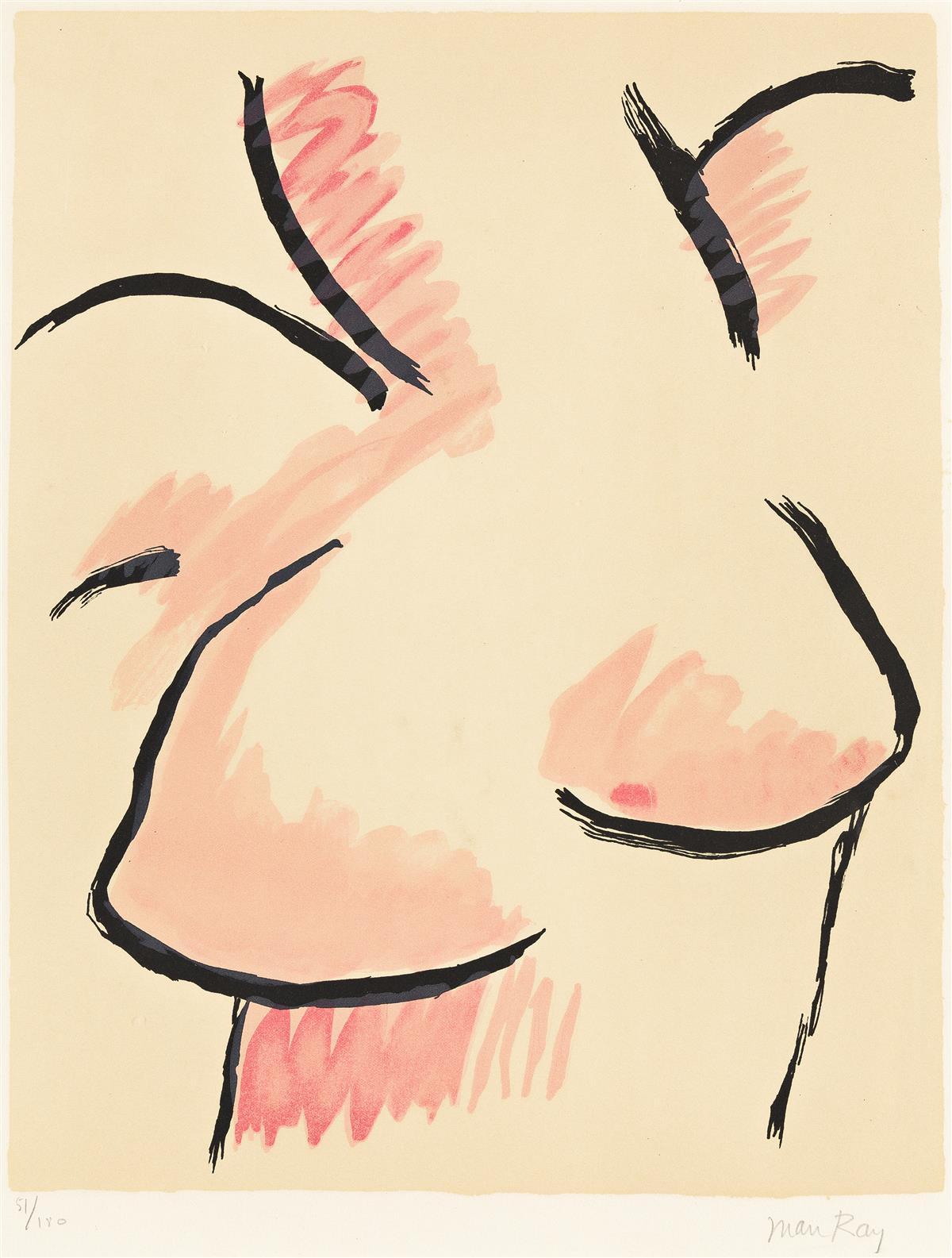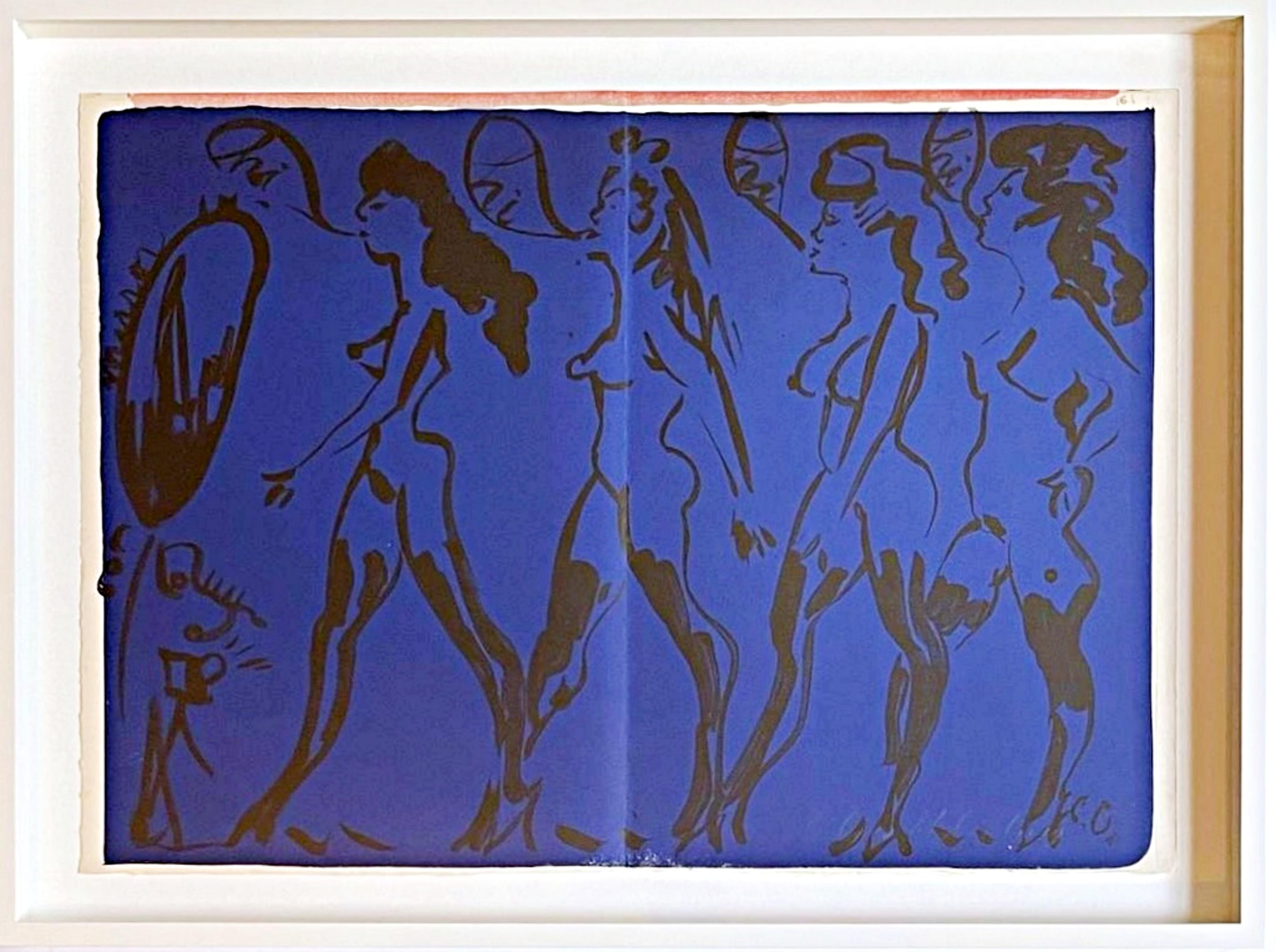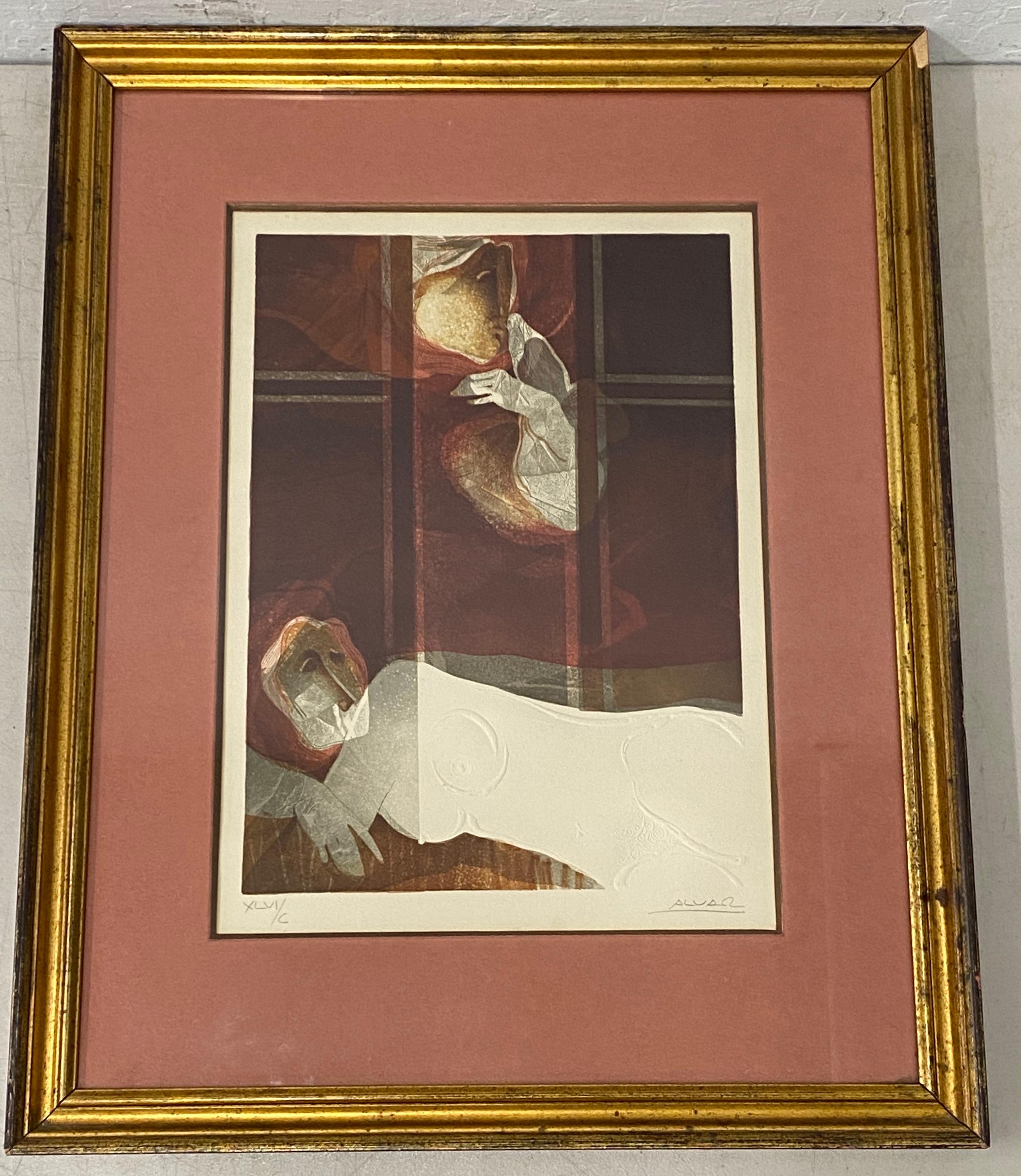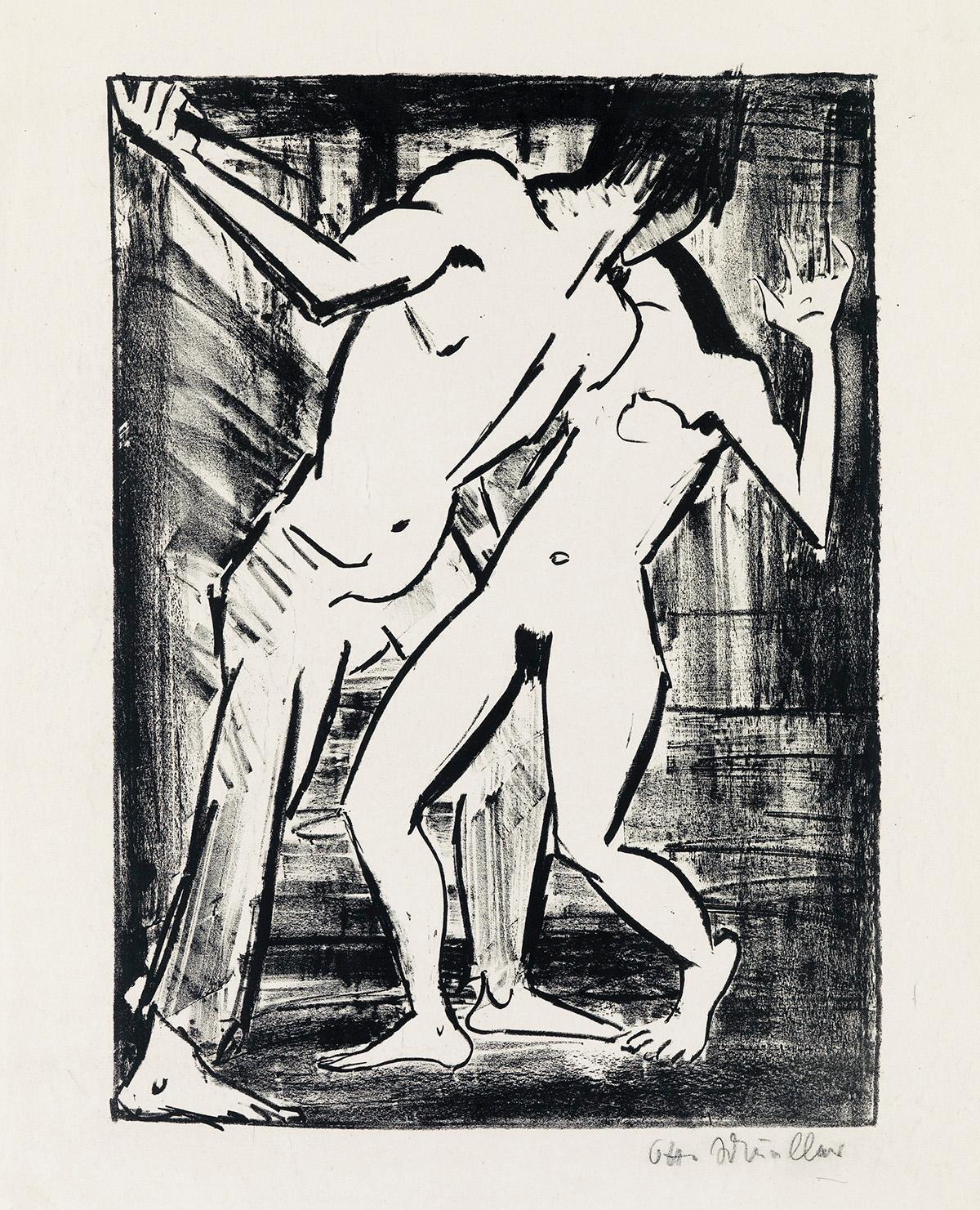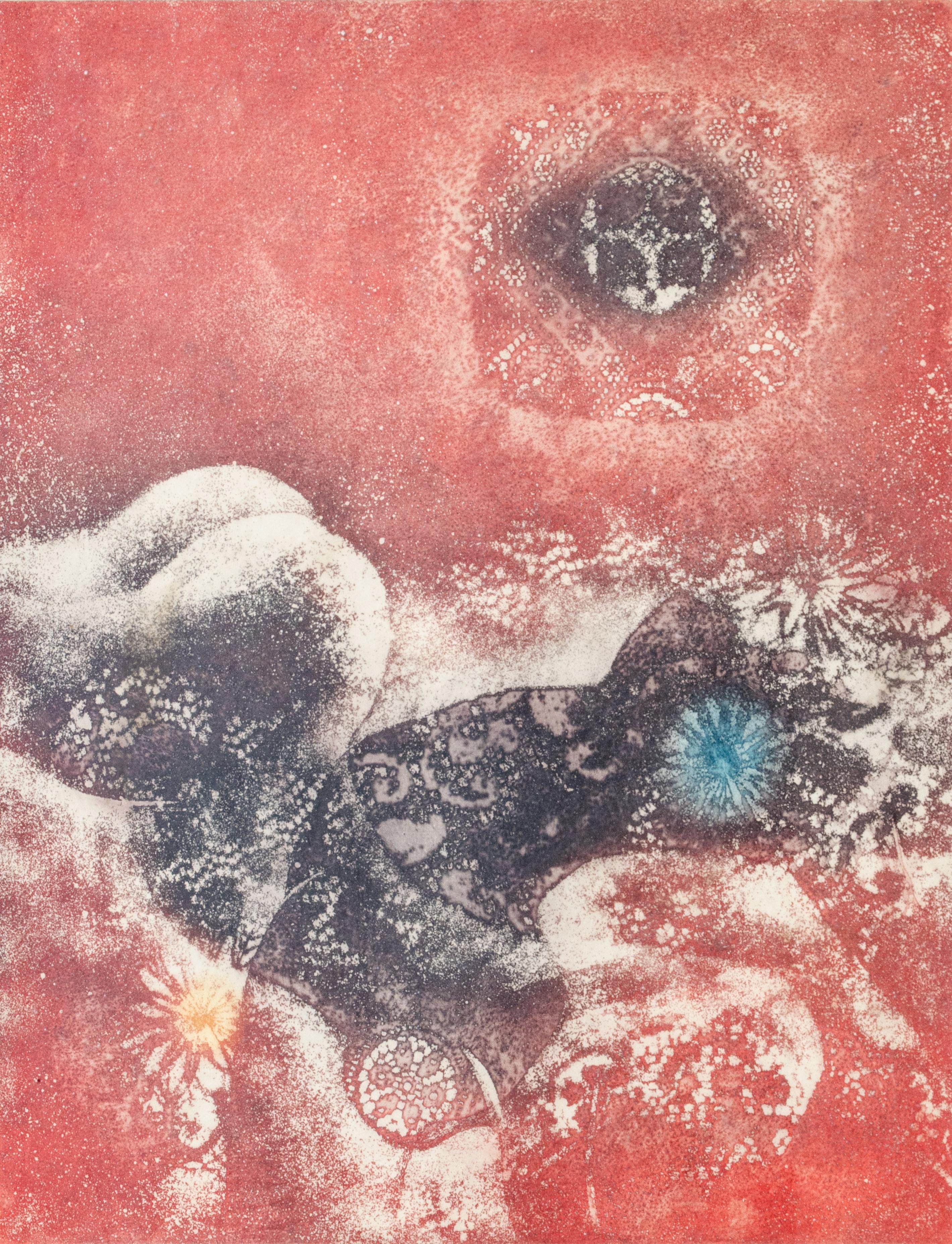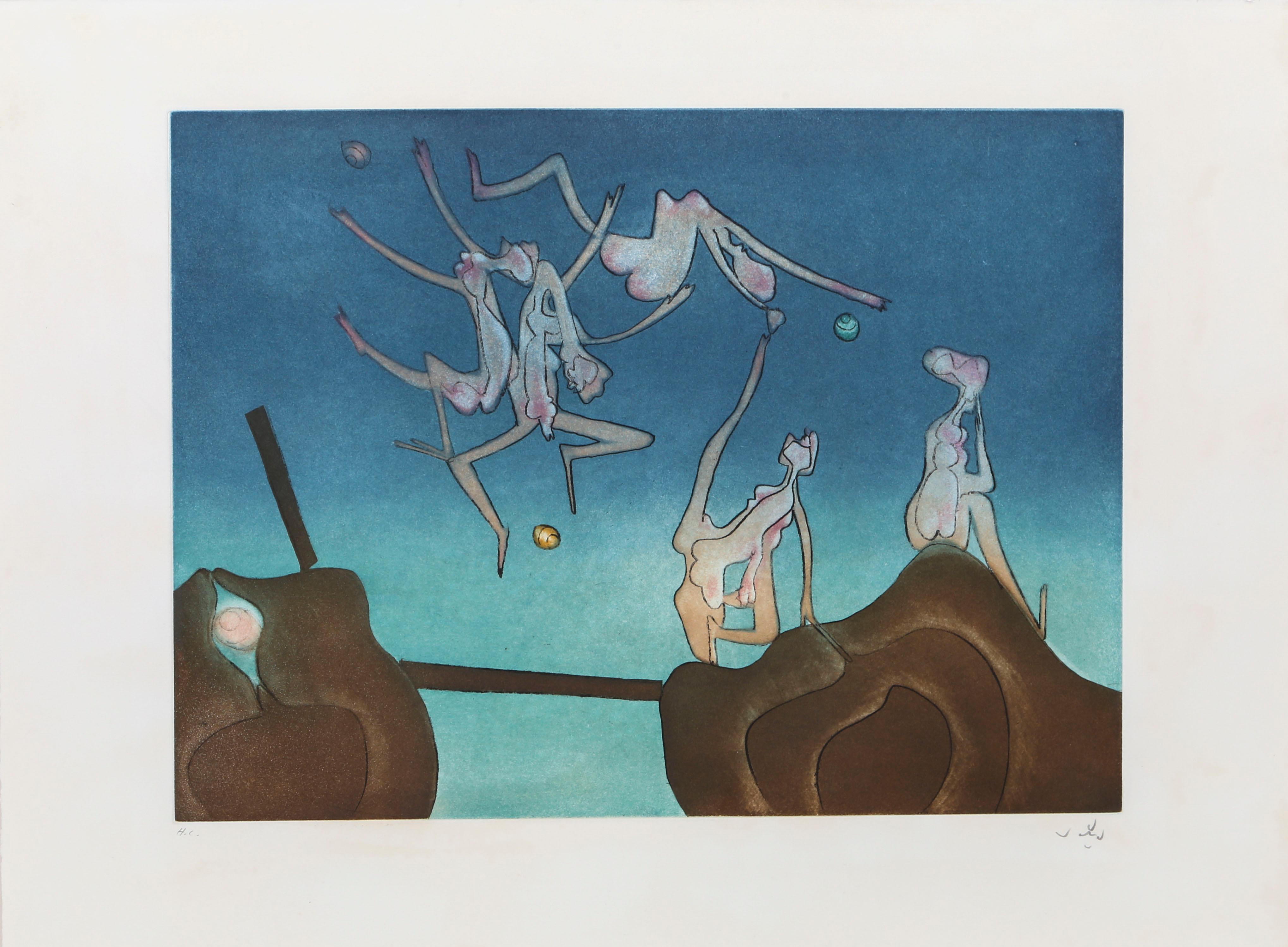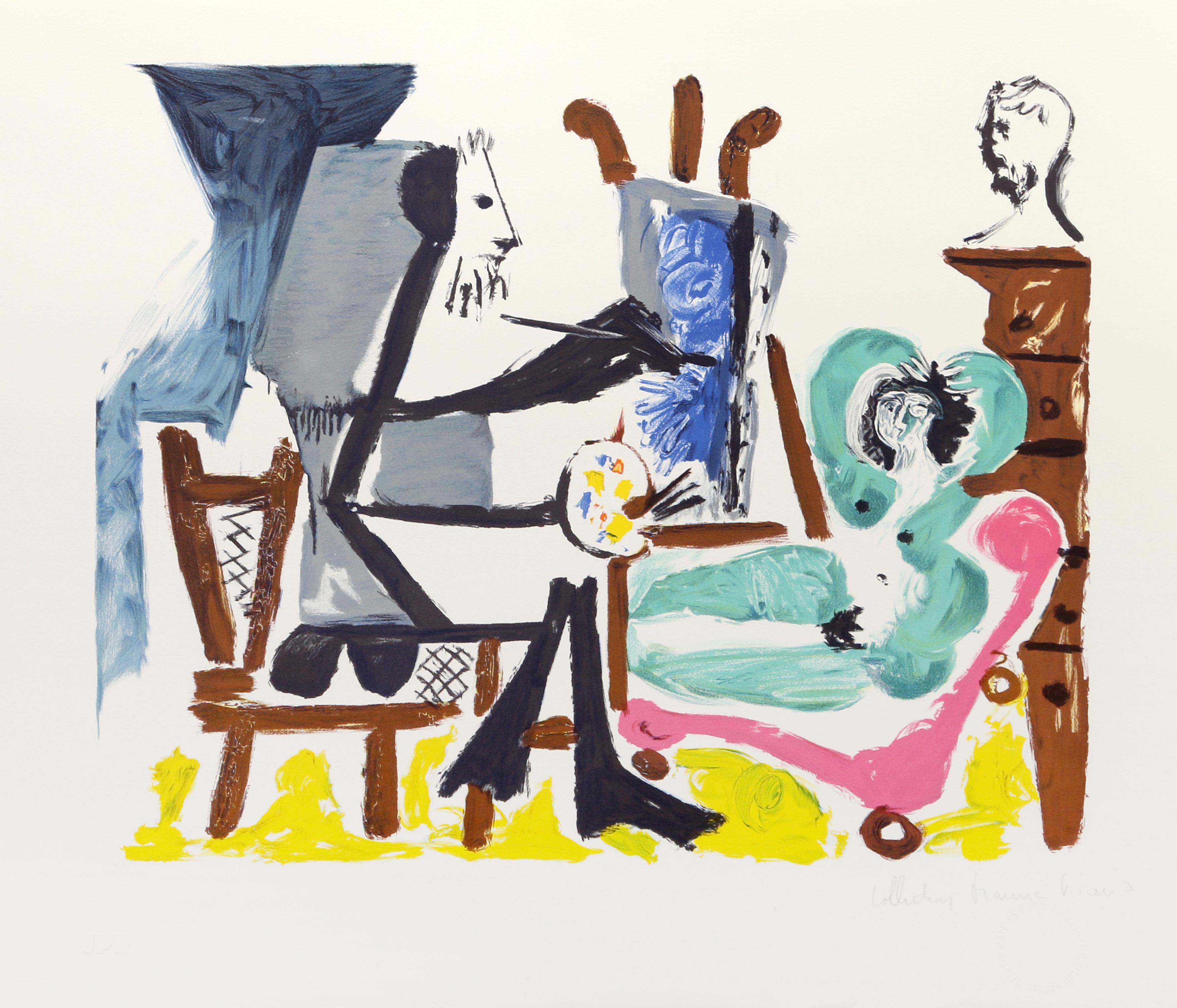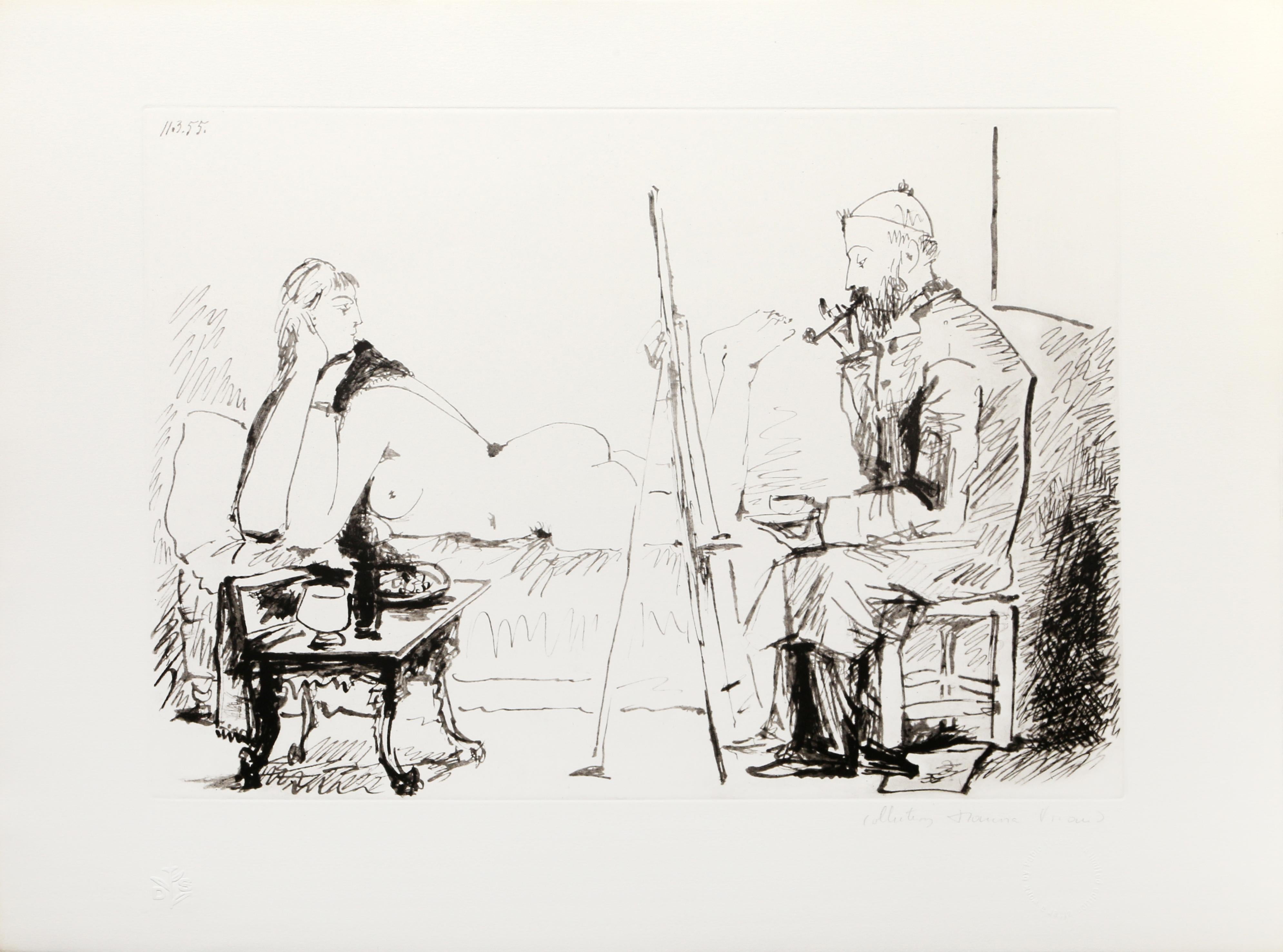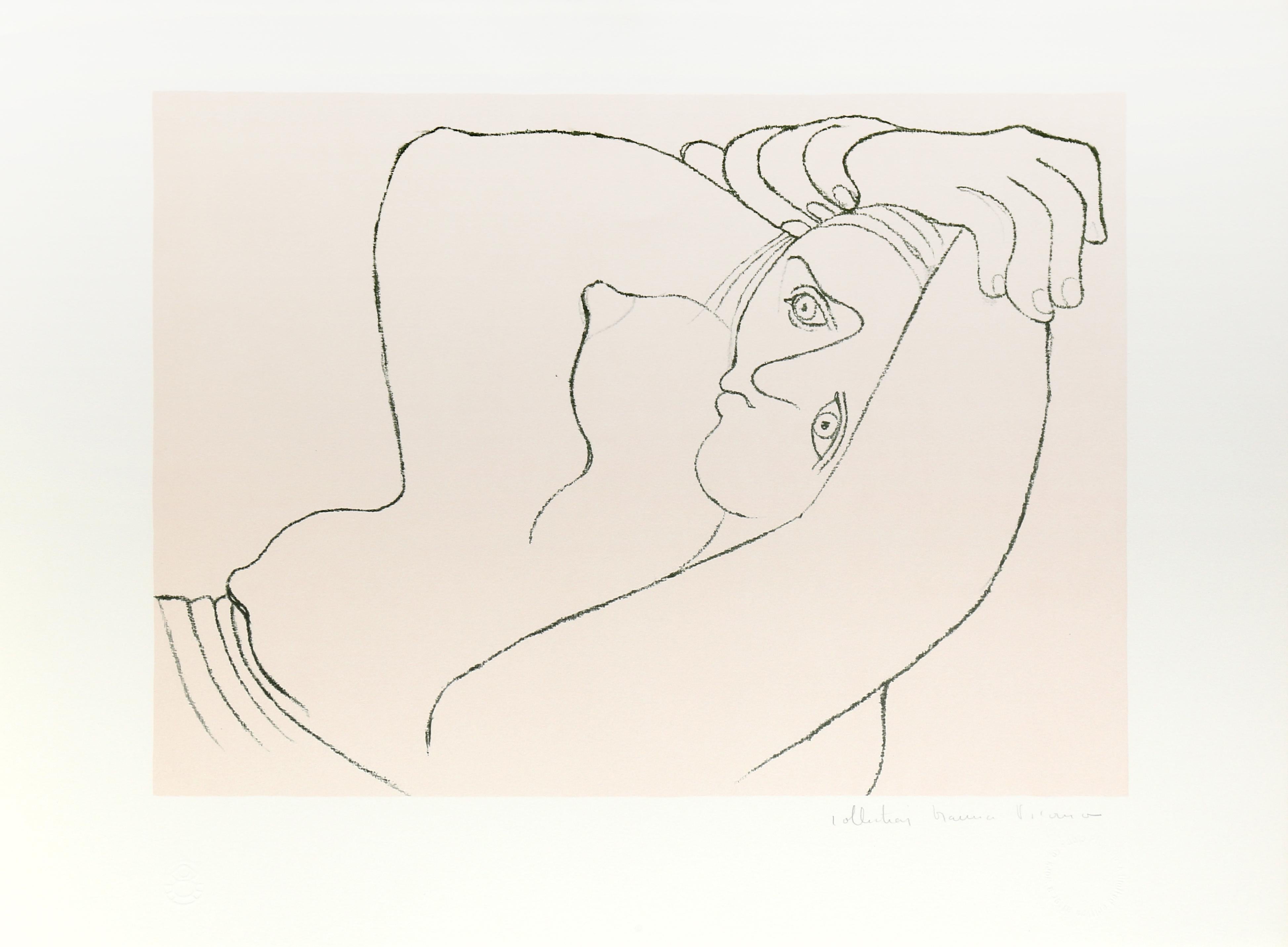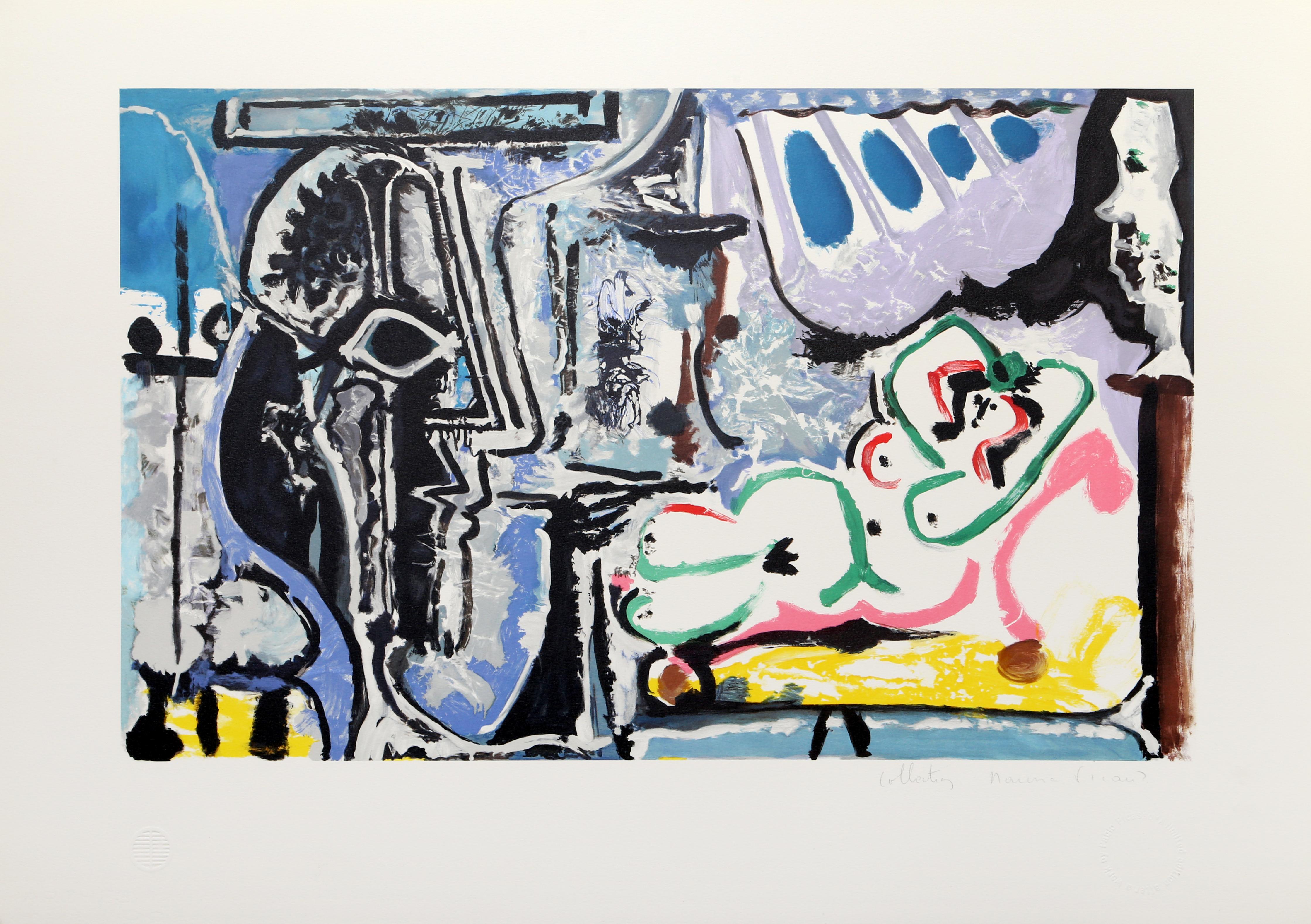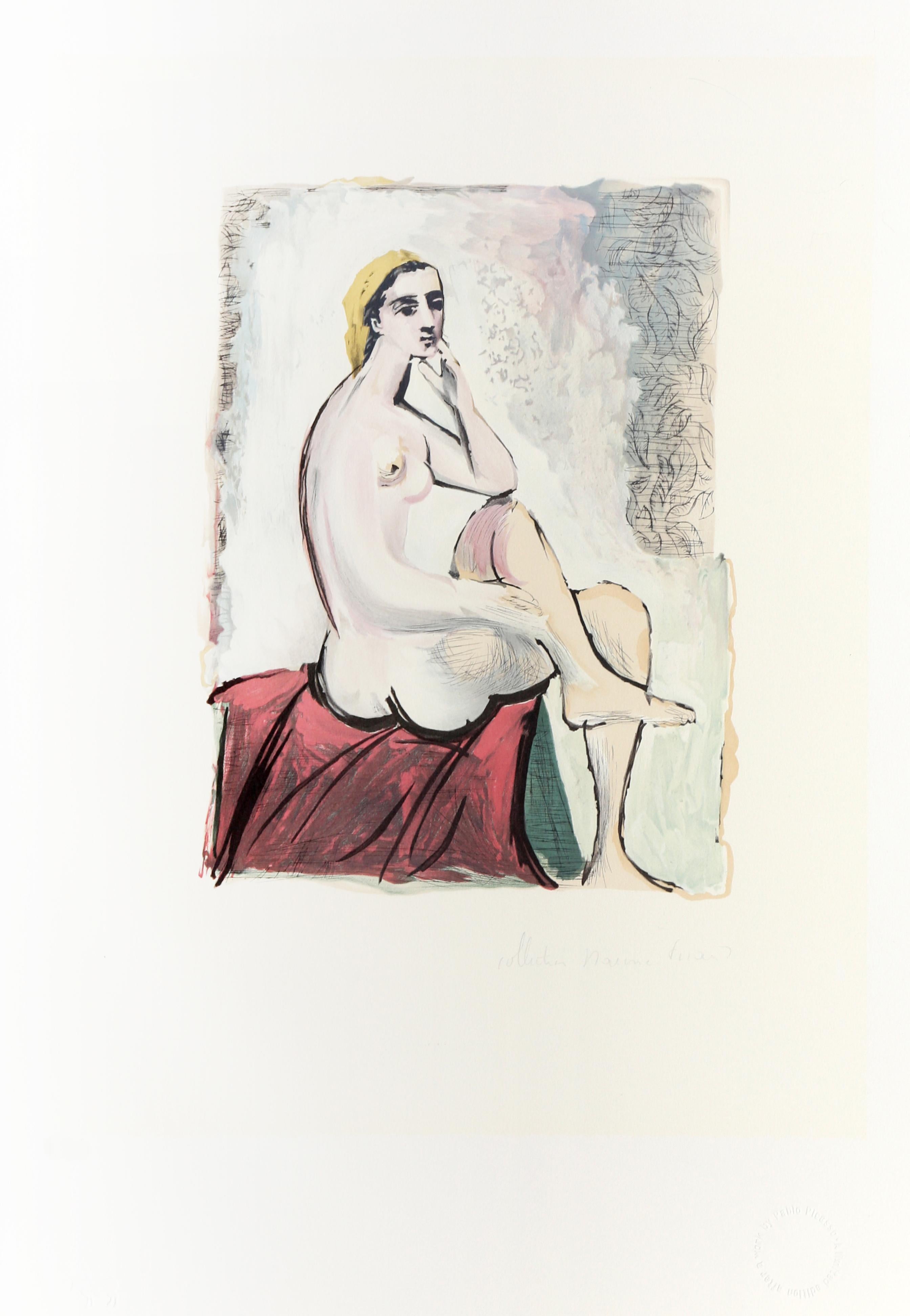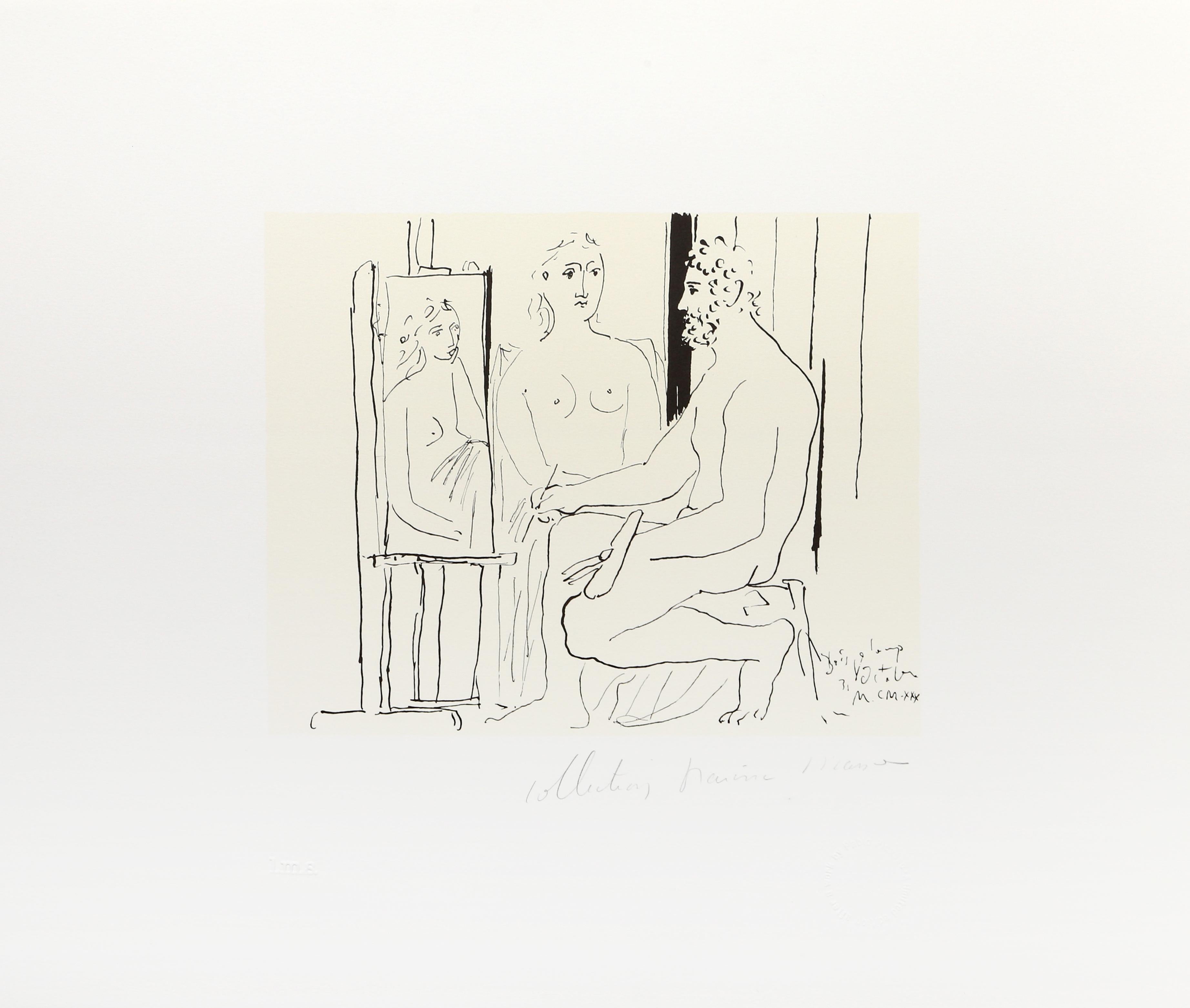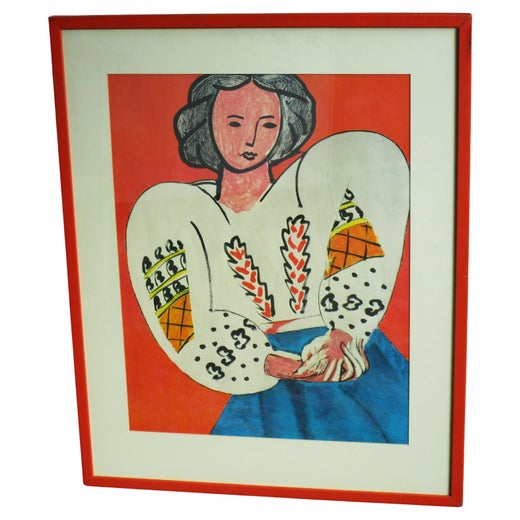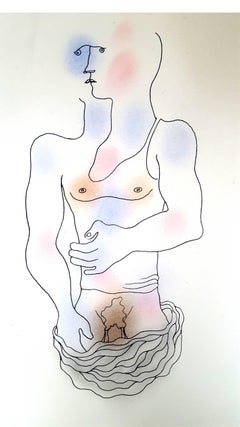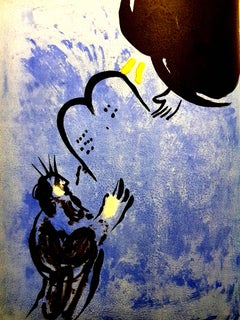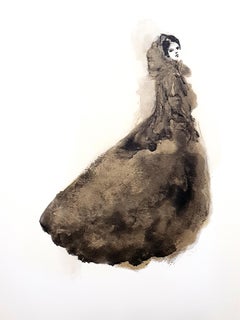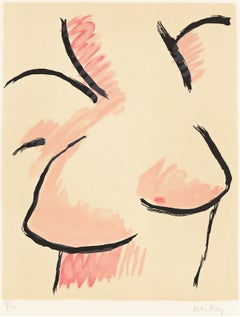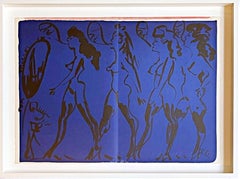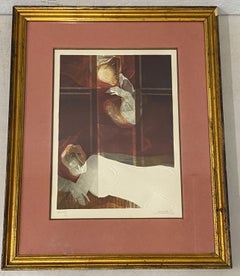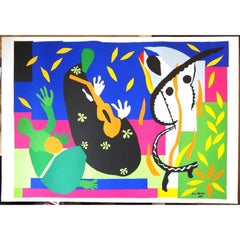
after Henri Matisse - King's Sadness
View Similar Items
Want more images or videos?
Request additional images or videos from the seller
1 of 8
(after) Henri Matisseafter Henri Matisse - King's Sadness1952
1952
$1,776.61List Price
About the Item
- Creator:(after) Henri Matisse (French)
- Creation Year:1952
- Dimensions:Height: 23.63 in (60 cm)Width: 31.5 in (80 cm)Depth: 0.04 in (1 mm)
- Medium:
- Movement & Style:
- Period:
- Condition:
- Gallery Location:Collonge Bellerive, Geneve, CH
- Reference Number:1stDibs: LU16125000451
(after) Henri Matisse
Henri Matisse was born on December 31, 1869, in Le Cateau-Cambrésis, France. At 22, he had given up studying law in Paris to pursue painting. He had briefly studied art at the Académie Julian and Ecole des Beaux-Arts with Gustave Moreau. At 32, Matisse exhibited at the Salon des Indépendants in Paris, where he met Maurice de Vlaminck, who with Matisse would eventually lead the Fauve art movement. Matisse's work was included in the 1913 Armory Show in New York, and throughout the 1910s and into the 1920s, his work began to find collectors around the world. Throughout the 1920s and 1930s, he divided his time between Paris and southern France, producing paintings, sculpture, lithographs, and etchings. Like many avant-garde artists in Paris, Matisse was receptive to a broad range of influences, particularly 'primitive' art, Near Eastern decorative art, African masks and sculpture, impressionist color, cubism, and the paintings of Paul Cezanne. The artist's images of the human face and figure -rendered in fluid lines and flat fields of color- typify these influences. Matisse argued for the prominence of instinct in art production, believing that an artist should not have complete control over color and form. He died on November 3, 1954, in Nice.
About the Seller
4.9
Gold Seller
Premium sellers maintaining a 4.3+ rating and 24-hour response times
Established in 2015
1stDibs seller since 2015
959 sales on 1stDibs
Authenticity Guarantee
In the unlikely event there’s an issue with an item’s authenticity, contact us within 1 year for a full refund. DetailsMoney-Back Guarantee
If your item is not as described, is damaged in transit, or does not arrive, contact us within 7 days for a full refund. Details24-Hour Cancellation
You have a 24-hour grace period in which to reconsider your purchase, with no questions asked.Vetted Professional Sellers
Our world-class sellers must adhere to strict standards for service and quality, maintaining the integrity of our listings.Price-Match Guarantee
If you find that a seller listed the same item for a lower price elsewhere, we’ll match it.Trusted Global Delivery
Our best-in-class carrier network provides specialized shipping options worldwide, including custom delivery.More From This Seller
View AllAndré Masson - Original Lithograph
By André Masson
Located in Collonge Bellerive, Geneve, CH
Maurice Estève - Composition
Original Lithograph
1964
Dimensions: 32 x 25 cm
Revue XXe Siècle
Cahiers d'art published under the direction of G. di San Lazzaro.
French painter born...
Category
1960s Abstract Expressionist Nude Prints
Materials
Lithograph
Jean Cocteau - White Book - Original Handcolored Lithograph
By Jean Cocteau
Located in Collonge Bellerive, Geneve, CH
Jean Cocteau
White Book - Autobiography about Cocteau's discovery of his homosexuality. The book was first published anonymously and created a scandal.
Original Handcolored Lithograph...
Category
1930s Modern Nude Prints
Materials
Lithograph
Marc Chagall - Moses - Original Lithograph
By Marc Chagall
Located in Collonge Bellerive, Geneve, CH
Marc Chagall, Original Lithograph depicting an instant of the Bible.
Technique: Original lithograph in colours
Year: 1956
Sizes: 35,5 x 26 cm / 14" x 10.2" (sheet)
Published by: Éditions de la Revue Verve, Tériade, Paris
Printed by: Atelier Mourlot, Paris
Documentation / References: Mourlot, F., Chagall Lithograph [II] 1957-1962, A. Sauret, Monte Carlo 1963, nos. 234 and 257
Marc Chagall (born in 1887)
Marc Chagall was born in Belarus in 1887 and developed an early interest in art. After studying painting, in 1907 he left Russia for Paris, where he lived in an artist colony on the city’s outskirts. Fusing his own personal, dreamlike imagery with hints of the fauvism and cubism popular in France at the time, Chagall created his most lasting work—including I and the Village (1911)—some of which would be featured in the Salon des Indépendants exhibitions. After returning to Vitebsk for a visit in 1914, the outbreak of WWI trapped Chagall in Russia. He returned to France in 1923 but was forced to flee the country and Nazi persecution during WWII. Finding asylum in the U.S., Chagall became involved in set and costume design before returning to France in 1948. In his later years, he experimented with new art forms and was commissioned to produce numerous large-scale works. Chagall died in St.-Paul-de-Vence in 1985.
The Village
Marc Chagall was born in a small Hassidic community on the outskirts of Vitebsk, Belarus, on July 7, 1887. His father was a fishmonger, and his mother ran a small sundries shop in the village. As a child, Chagall attended the Jewish elementary school, where he studied Hebrew and the Bible, before later attending the Russian public school. He began to learn the fundamentals of drawing during this time, but perhaps more importantly, he absorbed the world around him, storing away the imagery and themes that would feature largely in most of his later work.
At age 19 Chagall enrolled at a private, all-Jewish art school and began his formal education in painting, studying briefly with portrait artist Yehuda Pen. However, he left the school after several months, moving to St. Petersburg in 1907 to study at the Imperial Society for the Protection of Fine Arts. The following year, he enrolled at the Svanseva School, studying with set designer Léon Bakst, whose work had been featured in Sergei Diaghilev's Ballets Russes. This early experience would prove important to Chagall’s later career as well.
Despite this formal instruction, and the widespread popularity of realism in Russia at the time, Chagall was already establishing his own personal style, which featured a more dreamlike unreality and the people, places and imagery that were close to his heart. Some examples from this period are his Window Vitebsk (1908) and My Fianceé with Black Gloves (1909), which pictured Bella Rosenfeld, to whom he had recently become engaged.
The Beehive
Despite his romance with Bella, in 1911 an allowance from Russian parliament member and art patron Maxim Binaver enabled Chagall to move to Paris, France. After settling briefly in the Montparnasse neighborhood, Chagall moved further afield to an artist colony known as La Ruche (“The Beehive”), where he began to work side by side with abstract painters such as Amedeo Modigliani and Fernand Léger as well as the avant-garde poet Guillaume Apollinaire. At their urging, and under the influence of the wildly popular fauvism and cubism, Chagall lightened his palette and pushed his style ever further from reality. I and the Village (1911) and Homage to Apollinaire (1912) are among his early Parisian works, widely considered to be his most successful and representative period.
Though his work stood stylistically apart from his cubist contemporaries, from 1912 to 1914 Chagall exhibited several paintings at the annual Salon des Indépendants exhibition, where works by the likes of Juan Gris, Marcel Duchamp and Robert Delaunay were causing a stir in the Paris art world. Chagall’s popularity began to spread beyond La Ruche, and in May 1914 he traveled to Berlin to help organize his first solo exhibition, at Der Sturm Gallery. Chagall remained in the city until the highly acclaimed show opened that June. He then returned to Vitebsk, unaware of the fateful events to come.
War, Peace and Revolution
In August 1914 the outbreak of World War I precluded Chagall’s plans to return to Paris. The conflict did little to stem the flow of his creative output, however, instead merely giving him direct access to the childhood scenes so essential to his work, as seen in paintings such as Jew in Green (1914) and Over Vitebsk (1914). His paintings from this period also occasionally featured images of the war’s impact on the region, as with Wounded Soldier (1914) and Marching (1915). But despite the hardships of life during wartime, this would also prove to be a joyful period for Chagall. In July 1915 he married Bella, and she gave birth to a daughter, Ida, the following year. Their appearance in works such as Birthday (1915), Bella and Ida by the Window (1917) and several of his “Lovers” paintings give a glimpse of the island of domestic bliss that was Chagall’s amidst the chaos.
To avoid military service and stay with his new family, Chagall took a position as a clerk in the Ministry of War Economy in St. Petersburg. While there he began work on his autobiography and also immersed himself in the local art scene, befriending novelist Boris Pasternak, among others. He also exhibited his work in the city and soon gained considerable recognition. That notoriety would prove important in the aftermath of the 1917 Russian Revolution when he was appointed as the Commissar of Fine Arts in Vitebsk. In his new post, Chagall undertook various projects in the region, including the 1919 founding of the Academy of the Arts. Despite these endeavors, differences among his colleagues eventually disillusioned Chagall. In 1920 he relinquished his position and moved his family to Moscow, the post-revolution capital of Russia.
In Moscow, Chagall was soon commissioned to create sets and costumes for various productions at the Moscow State Yiddish...
Category
1950s Modern Figurative Prints
Materials
Lithograph
Leonor Fini - Saturday Night Dress - Original Lithograph
By Leonor Fini
Located in Collonge Bellerive, Geneve, CH
Leonor Fini - Saturday Night Dress - Original Lithograph
The Flowers of Evil
1964
Conditions: excellent
Edition: 500
Dimensions: 46 x 34 cm
Editions: Le Cercle du Livre Précieux, P...
Category
1960s Modern Nude Prints
Materials
Lithograph
Leonor Fini - Pride - Original Lithograph
By Leonor Fini
Located in Collonge Bellerive, Geneve, CH
Leonor Fini - Pride - Original Lithograph
The Flowers of Evil
1964
Conditions: excellent
Edition: 500
Dimensions: 46 x 34 cm
Editions: Le Cercle du Livre Précieux, Paris
Unsigned a...
Category
1960s Modern Nude Prints
Materials
Lithograph
Leonor Fini - Prisonners - Original Lithograph
By Leonor Fini
Located in Collonge Bellerive, Geneve, CH
Leonor Fini - Prisonners - Original Lithograph
The Flowers of Evil
1964
Conditions: excellent
Edition: 500
Dimensions: 46 x 34 cm
Editions: Le Cercle du Livre Précieux, Paris
Unsig...
Category
1960s Modern Nude Prints
Materials
Lithograph
You May Also Like
De l'Origine des Espèces par Voie de Sélection Irrationelle: Buste de femme
By Man Ray
Located in New York, NY
A very good impression of this color lithograph. Signed and numbered 51/180 in pencil. Printed by Mourlot, Paris. Published by Leon Amiel, New York, and XXe Siècle, Paris. From the s...
Category
1970s Modern Abstract Prints
Materials
Color, Lithograph
Parade of Women, from Deluxe, Hand Signed, 85/100 1 Cent Life Portfolio, Framed
By Claes Oldenburg
Located in New York, NY
Claes Oldenburg
Parade of Women from the Deluxe hand signed edition of 1 Cent Life Portfolio (Acquired from the Estate of Robert Indiana), 1964
Color lithograph on wove paper
Published by E.W. Kornfeld, Germany, Written by Walasse Ting, Edited by Sam Francis
Hand-signed by Claes Oldenburg on the lower right front; numbered 85/100 on the colophon page a copy of which is affixed to the back of the frame -see photo
Frame included: elegantly floated and framed in hand made museum frame with UV plexiglass, and colophon page with unique edition number affixed to the back. (see photos)
This hand signed work is from the Deluxe hand signed edition of only 100 - not to be confused from the unsigned edition of 2000. (None of the works from the edition of 2000 were ever signed by Oldenburg.) Hand signed editions are rarely if ever seen on the marketplace.
This original lithograph, splayed across two pages, is from the Deluxe edition of the legendary 1 Cent Life Portfolio, one of the most important and celebrated artistic collaborations of the 1960s. Chinese American artist and writer Walasse Ting, in collaboration with Sam Francis, assembled a group of the most significant Pop and Abstract Expressionist artists in America, including Pop Artist Claes Oldenburg, along with the European COBRA artists to create the definitive artistic portfolio, with text by Walasse Ting. The Deluxe edition, which features hand signed prints was published in a limited edition of only 100. This is one of them. Of the 100, editions numbered 60-100, or 40 portfolios, were reserved exclusively for Artists & Collaborators. This hand signed Claes Oldenburg lithograph...
Category
1960s Pop Art Abstract Prints
Materials
Lithograph
Alvar Sunol Embossed Figural Abstract Nude Lithograph C.1978
By Sunol Alvar
Located in San Francisco, CA
Alvar Sunol Embossed Figural Abstract Nude Lithograph C.1978
Number 46 from an edition of 100
Dimensions 12" x 16.5"
The frame measures 22" x 27.5"
The frame shows a chip at one...
Category
Mid-20th Century Abstract Nude Prints
Materials
Lithograph
Der Mord II (Liebespaar II)
By Otto Mueller
Located in New York, NY
A superb, richly-inked impression of this very scarce, important German Expressionist lithograph on smooth, cream wove paper. Edition of approximately only 20. Signed in pencil. Publ...
Category
1910s Expressionist Abstract Prints
Materials
Lithograph
Vintage Abstracted Nude Print by Lanny Lasky
Located in New York, NY
Lanny Lasky (1923-2011)
Untitled, c. 1970s
Print (lithograph?)
Sight: 22 1/4 x 17 1/2 in. (image)
Framed: 30 1/2 x 22 1/2 x 1 1/2 in.
Signed lower right, numbered lower left: 113/120
Lasky was as passionate about making art accessible to all as she was about creating it. She devoted much of her time to art education — as an education director for the Hudson River Museum, at the Lincoln Center Institute and the Bronx Council on the Arts. She was a consultant to the New York State Council on the Arts and the Connecticut State Department of Education and worked in many capacities, including director at the Museum of Modern Art’s education department from 1986 to 2001.
Lasky brought art to countless Riverdale children and senior citizens through her work with Riverdale Neighborhood House.
“Throughout her life she was always committed to her work as an artist, but she was also seriously committed to art education and that was important,” her son, Michael Lasky, said.
“She worked toward innovative art programs and had the kids paint...
Category
1970s Abstract Nude Prints
Materials
Lithograph
Sans Titre, Surrealist Lithograph by Roberto Matta
By Roberto Matta
Located in Long Island City, NY
This raucous scene by Latin American Surrealist Roberto Matta shows leaping nude figures flying through the air above what look like boulders. Their bodies are warped and stretched a...
Category
1960s Abstract Prints
Materials
Lithograph
